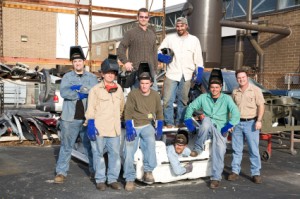This is part 3 of a 5-part article.
Read Part 1 Here
Read Part 2 Here
Indeed, by the 1990s America was deeply into the Industrial Age.
Industrial tribes (no longer really Tribes, but rather tribes, small “t”) were built around career. People left the farms, and the communities which connected them, for economic opportunities in the cities and suburbs.
Some ethnicities, churches and even gangs maintained community-type tribes, but most people joined a different kind of tribe: in the workplace.
The means of production and measure of wealth in Industrial tribes was capital. The more capital you could get invested, the better your tribe fared (at least for a while) versus other tribes.
Competition was the name of the game. Higher capital investment meant better paychecks and perks, more job security, and a brighter future—or so the theory went.
While it lasted, this system was good for those who turned professional education into a lucrative career.
With level three came new rules of tribe membership. For example, individuals in industrial societies were able and even encouraged to join multiple tribes.
Where this had been possible in Agrarian communities, nearly everyone still enjoyed a central or main community connection.
But in the Industrial era, everyone joined long lists of tribes. In addition to your work colleagues, Industrial professionals also had alma-maters, lunch clubs like the Kiwanis or Rotarians, professional associations like the AMA or ABA or one of the many others, and so on.
With your kids in soccer, you became part of a tribe with other team parents; same with the boy scouts and girls clubs.
Your tribes probably included a community fundraiser club, donors to the post office Christmas food drive, PTA or home school co-op (or both), church committees, car pool group, racquetball partners, biking team, local theatre, the kids’ choir, lunch with your friends, Cubs or Yankees fans, and the list goes on and on and on.
In level three, the more tribes the better!
 The two major tribes that nearly everybody joined in Industrial society were work tribes and tribes of friends.
The two major tribes that nearly everybody joined in Industrial society were work tribes and tribes of friends.
Between these two, little time was left for much besides work and entertainment.
But make no mistake, the guiding force in such a society, the central tribe which all the others were required to give way for, was making the paycheck.
Families moved, children’s lives conformed, marriages sacrificed, and friends changed if one’s work demanded it. It was not always so, and this morality defined Industrial Age culture.
One big downside to Paycheck Tribes is that they cared about your work but not so much about you. Indeed, this is one of the main reasons why Industrial tribes weren’t really even tribes.
The other major reason is that you had only a few close friends and most people didn’t truly count on any non-family group or neighborhood or community to really be there for you when you needed it.
That’s why this is called National society, because it’s not really a tribal community of bonded, connected people who truly love you and will take a stand for you.
Of course, there are some who build and maintain fabulous agrarian-type relationships, friendships and communities during Industrial eras.
It is just harder and less naturally occurring than in the other types of tribal periods and places. The main reason for this may be simply that capital is less naturally connective than legs, hands, family, church or a caring neighborhood.
This is not to say that companies can’t care, love and connect. In fact, I think that is exactly what they’ll have to do to truly succeed in the Information Age.
However, during Industrial Ages connecting and caring and building relationships is less valued by many. Those who put family, friends and other vital relationships first find much happiness and community connection during any period of history.
Fortunately, we live in a time when the new e-tribes are growing and increasingly available.
To be continued…
***********************************
 Oliver DeMille is the founder and former president of George Wythe University, a co-founder of the Center for Social Leadership, and a co-creator of TJEd Online.
Oliver DeMille is the founder and former president of George Wythe University, a co-founder of the Center for Social Leadership, and a co-creator of TJEd Online.
He is the author of A Thomas Jefferson Education: Teaching a Generation of Leaders for the 21st Century, and The Coming Aristocracy: Education & the Future of Freedom.
Oliver is dedicated to promoting freedom through leadership education. He and his wife Rachel are raising their eight children in Cedar City, Utah.






[…] This post was mentioned on Twitter by kimberly jones. kimberly jones said: Type of Tribes, Part 3: Level Three Tribes | The Center for Social …: However, during Industrial Ages connecting… http://bit.ly/aVIlcr […]